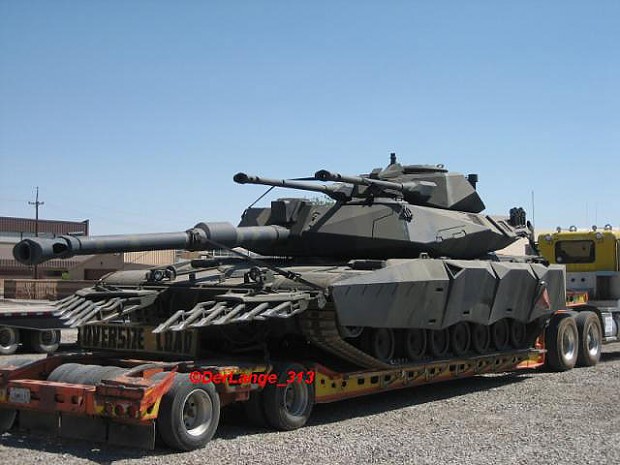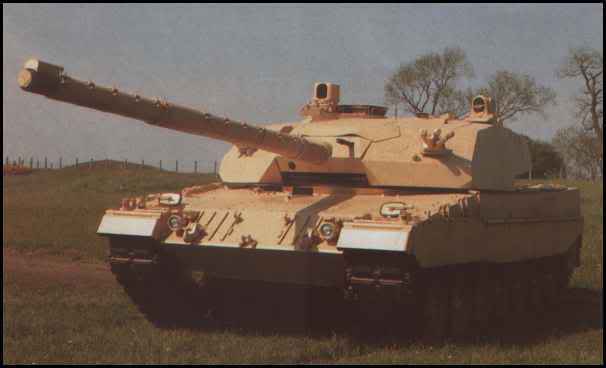The Type 63A amphibious light tank is a radically improved variant of the Type 63. The Type 63A entered service with Chinese Army in 1997. Over 300 of these light tanks were built. Currently very few countries develop amphibious tanks and China is one of them.
It's predecessor, the Type 63, was originally designed for river-crossing operations at inland rivers and lakes, however it was unsuitable for high-speed, long-distance maritime operations. The new Type 63A has specially modified features to improve it's amphibious performance at sea. It can be launched from amphibious ships 10 km or more offshore.
Weak protection of the Type 63A is it's most significant drawback. This light tank has very thin armor, as it's developers had to keep overall weight as low as possible. The Type 63A has a redesigned welded turret, rather than original half-egg shaped of the Type 63. Despite all improvements in protection this light tank is fairly vulnerable to all anti-tank weapons.
The Type 63A is fitted with a fully-stabilized 105-mm rifled gun. This gun is loaded manually and fired APFSDS, HE and HEAT munitions. An APFSDS round can penetrate 500 mm of steel armor at 2 000 m range. This gun is similar to those fitted on some other Chinese MBTs, however it has reduced recoil force for firing while afloat.
The Type 63A is also likely to be armed with Chinese gun-launched anti-tank guided missiles, developed from the Russian 9M117 Bastion. This missile has a maximum range of 4 000 - 5 000 m and hit probability of over 90% against static targets. It can also be used against low-flying helicopters. Vehicle is fitted with a fire control system.
It is worth mentioning, that the original Type 63 was fitted with a non-stabilized 85-mm rifled gun, which is considered incapable by modern standards. Only simple optical sights were used for aiming.
Secondary armament consists of 7.62-mm coaxial machine gun and 12.7-mm MG, mounted on top of the turret roof.
![Type 63A Amphibious light tank]()
The Type 63A amphibious light tank is a radically improved variant of the Type 63. The Type 63A entered service with Chinese Army in 1997. Over 300 of these light tanks were built. Currently very few countries develop amphibious tanks and China is one of them.
It's predecessor, the Type 63, was originally designed for river-crossing operations at inland rivers and lakes, however it was unsuitable for high-speed, long-distance maritime operations. The new Type 63A has specially modified features to improve it's amphibious performance at sea. It can be launched from amphibious ships 10 km or more offshore.
Weak protection of the Type 63A is it's most significant drawback. This light tank has very thin armor, as it's developers had to keep overall weight as low as possible. The Type 63A has a redesigned welded turret, rather than original half-egg shaped of the Type 63. Despite all improvements in protection this light tank is fairly vulnerable to all anti-tank weapons.
The Type 63A is fitted with a fully-stabilized 105-mm rifled gun. This gun is loaded manually and fired APFSDS, HE and HEAT munitions. An APFSDS round can penetrate 500 mm of steel armor at 2 000 m range. This gun is similar to those fitted on some other Chinese MBTs, however it has reduced recoil force for firing while afloat.
The Type 63A is also likely to be armed with Chinese gun-launched anti-tank guided missiles, developed from the Russian 9M117 Bastion. This missile has a maximum range of 4 000 - 5 000 m and hit probability of over 90% against static targets. It can also be used against low-flying helicopters. Vehicle is fitted with a fire control system.
It is worth mentioning, that the original Type 63 was fitted with a non-stabilized 85-mm rifled gun, which is considered incapable by modern standards. Only simple optical sights were used for aiming.
Secondary armament consists of 7.62-mm coaxial machine gun and 12.7-mm MG, mounted on top of the turret roof.
![Leopard 2A4M CAN]()



















